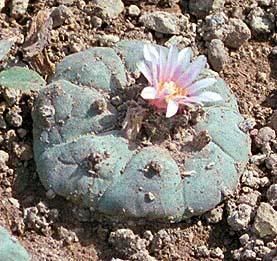Caduceus Mercurius
Holofractale de l'hypervérité
- Inscrit
- 14/7/07
- Messages
- 9 628
For many many years there has been speculation and urban legends about the possibly psychedelic or hallucinogenic inspiration for Walt Disney's animated masterpieces such as FANTASIA or the PINK ELEPHANTS sequence from Dumbo.
Paul Laffoley confirms: Disney's "Fantasia" was Mescaline Inspired

Paul relates the background information on how Disney became aware of the creative potentials of Mescaline (Peyote) while visiting Black Mountain College in North Carolina in 1935. Disney was visiting to meet with artistic director Josef Albers, the last head of the Bauhaus before the Nazis closed it. The students explained to Walt Disney that felt oppressed by Albers teaching techniques and took the summer vacations to Mexico to collect Peyote buttons for inspiration.

By 1936 Walt Disney was taking Mescaline of a regular basis, this information comes from the recollections of the students and faculty at black Mountain College as confided to Mr Laffoley.
Paul Laffoley Multidimensional Visionary Art

Question: Laffoley, I am writing to you to inquire as to whether you would be willing to tell me the story pertaining to the connections and history of Walt Disney’s connection to Josef Albers. Miles Huston told me a story that he said originated with you regarding Walt Disney and his infatuation with the Black Mountain College and the clique surrounding Josef Albers. I have been very interested in the subject matter and would love to hear what you have to say.
Thank you, Anais
Answer:
Dear Anais, In 1933, when Black Mountain College opened in Asheville, North Carolina, its artistic director was Josef Albers (1888-1972) the last head of the Bauhaus before the Nazis closed it. The contract for Albers and his wife Anni was offered by the American architect Philip Johnson (1906-2005). By 1935 Walt Disney (1908-1966) got wind of what was up. He rushed to get an interview with Albers explaining that no one had understood so far the artistic implications of the new field of animation. When they met Albers was not amused with Disney’s vision of cute nature. The meeting ended with Albers blowing up saying, “I will not allow any American kitsch to infect the minds of ‘my’ students.
Disney was astonished but not deterred from his mission. He sensed, however, that Albers’ “will to power
Paul Laffoley confirms: Disney's "Fantasia" was Mescaline Inspired

Paul relates the background information on how Disney became aware of the creative potentials of Mescaline (Peyote) while visiting Black Mountain College in North Carolina in 1935. Disney was visiting to meet with artistic director Josef Albers, the last head of the Bauhaus before the Nazis closed it. The students explained to Walt Disney that felt oppressed by Albers teaching techniques and took the summer vacations to Mexico to collect Peyote buttons for inspiration.

By 1936 Walt Disney was taking Mescaline of a regular basis, this information comes from the recollections of the students and faculty at black Mountain College as confided to Mr Laffoley.
Paul Laffoley Multidimensional Visionary Art

Question: Laffoley, I am writing to you to inquire as to whether you would be willing to tell me the story pertaining to the connections and history of Walt Disney’s connection to Josef Albers. Miles Huston told me a story that he said originated with you regarding Walt Disney and his infatuation with the Black Mountain College and the clique surrounding Josef Albers. I have been very interested in the subject matter and would love to hear what you have to say.
Thank you, Anais
Answer:
Dear Anais, In 1933, when Black Mountain College opened in Asheville, North Carolina, its artistic director was Josef Albers (1888-1972) the last head of the Bauhaus before the Nazis closed it. The contract for Albers and his wife Anni was offered by the American architect Philip Johnson (1906-2005). By 1935 Walt Disney (1908-1966) got wind of what was up. He rushed to get an interview with Albers explaining that no one had understood so far the artistic implications of the new field of animation. When they met Albers was not amused with Disney’s vision of cute nature. The meeting ended with Albers blowing up saying, “I will not allow any American kitsch to infect the minds of ‘my’ students.
Disney was astonished but not deterred from his mission. He sensed, however, that Albers’ “will to power